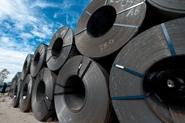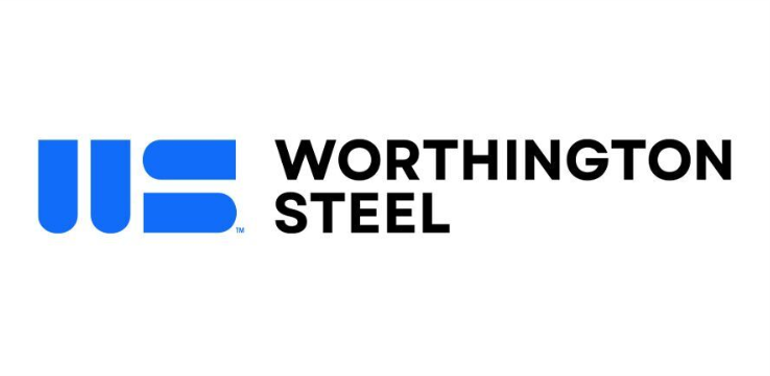Service Centers

‘Window of Opportunity’ for Secondary Steel
Written by Tim Triplett
March 6, 2018
With steel imports mostly on hold awaiting the final word on Trump’s tariffs, supplies of prime steel are tightening, putting distributors of secondary material in the catbird seat, at least for a while. But the supply of secondary is tightening, as well, say service center executives, who aren’t sure how long the window of opportunity will remain open.
The secondary market is reacting to the news of possible 25 percent tariffs on steel imports right along with the prime steel market, as the two are intertwined. Like prime steel, the rate at which secondary prices are increasing is “mind blowing,” said Lisa Goldenberg, president of Delaware Steel of Pennsylvania. Secondary steel is nonprime or excess material that did not meet the specifications for its original intended use but is acceptable to other buyers for other applications.
Prices are high and demand is good, but secondary material is becoming harder to find. The available supply of secondary varies by product and by region, “but the general availability of sellable non-prime material suitable for multiple applications is getting thinner and thinner,” said a service center executive in the Midwest. Buyers are more willing to accept coils with imperfections because they know they will be difficult to replace. “Now, instead of rejecting it, maybe they take the coil and cut out the bad section.” Added Goldenberg, “The line between secondary and prime has definitely blurred because people really need steel. People who normally don’t even look at secondary are taking anything they can get.”
The Midwest exec describes the secondary market as “frenzied,” adding that “service centers are suddenly feeling a lot smarter” as profits rise along with the price. Secondary prices have been increasing weekly, with more jumps likely to come. Secondary is a spot market product, so competition for high-demand items bids up the price, narrowing the spread between secondary and prime. “We are in a sweet spot in secondary right now. Inventory value has grown at a high rate, and there’s good demand. There is opportunity in this window, but it will shut pretty quickly,” he predicted, as distributors will have difficulty replacing the steel they’ve sold. “Sixty days from now there could be some serious gaps in availability.”
Another small service center in the Midwest also reports tight supplies of secondary. “What secondary that does come on the market is more in slab rolling than finished product,” he said. “While it is very tight at the moment, it is still being traded.” The side-cut business has also become very tight—prime material but excess from the original order. “Pricing for excess and side-cuts are almost at prime pricing, with rare exceptions,” he said.
Some service centers are hanging on to secondary material waiting for the market to reach the price they want, which is adding to the limited supply situation, reported a source in the Northeast. Prices will peak at some point and begin a downward correction. The challenge is predicting when. “We are trying to protect ourselves. We will really watch our purchasing going forward and make sure it is tied to customer orders. We will only buy what we need, we will not take a position on anything, because it is not worth the downside,” he said.
The sky-high steel prices are adding to the credit risk for buyers and sellers. If a buyer has a $100,000 credit line and prices jump by 30 percent, he can’t buy as much material unless the supplier extends more credit. “People are running out of their bank line, they are running out of credit insurance, they are up against their limit. The market favors the larger players with deep pockets even more these days,” Goldenberg said.
The Midwestern source expects the short-supply situation to ease soon as imports begin to flow again when the winter season ends. “Open navigation is only weeks away and will settle all these supply issues at a price cheaper than domestic, even with the tariffs,” he predicted.

Tim Triplett
Read more from Tim TriplettLatest in Service Centers

Olympic opens new Houston facility for Action Stainless unit
Olympic Steel has opened a new facility in Houston to support its Action Stainless business.

Worthington Steel sees demand improvement after earnings slump
Lower volumes and steel prices dampened Worthington Steel’s profits, but market momentum is building, the metals processor said in its most recent quarterly earnings report.

Galvanized buyers see strong demand, but uncertainty lingers
Demand is up, but tariffs raise concerns

Olympic taps Zito for new VP of development role
Cleveland-based Olympic Steel Inc. has promoted Scott M. Zito to the newly created role of vice president of business development. Zito has been with the company for more than 40 years.

Worthington Steel and Samuel to close Cleveland coil processing JV
Worthington Steel confirmed it is closing the Worthington Samuel Coil Processing (WSCP) facility in Cleveland. WSCP is a joint venture between Worthington Steel and Oakville, Ontario-based Samuel, Son & Co.
